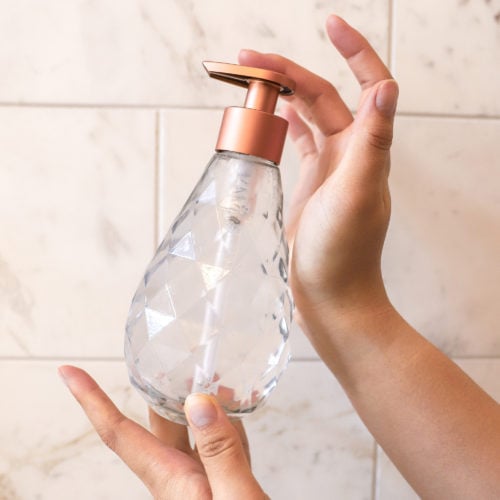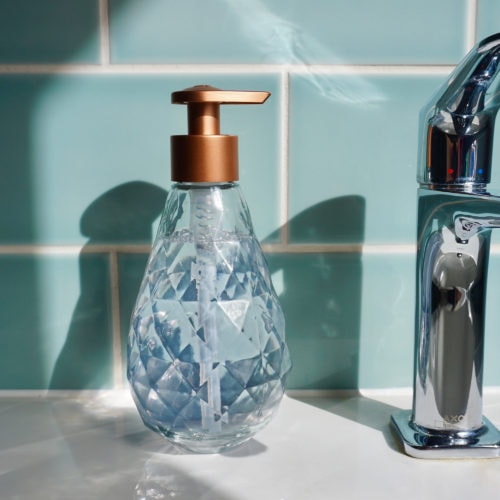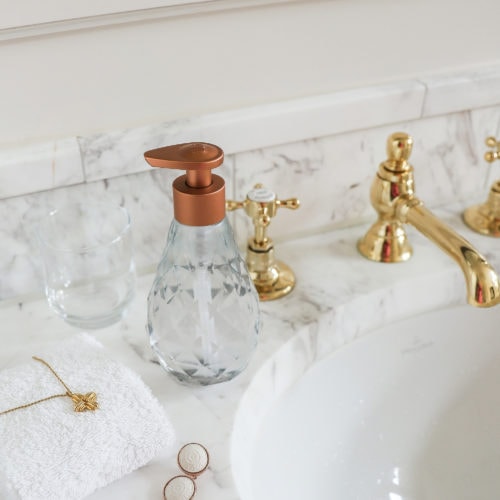
looks good. smells good. our forever bottle is designed to be refilled + reused. launched in partnership with the Design Museum.
shop glass for good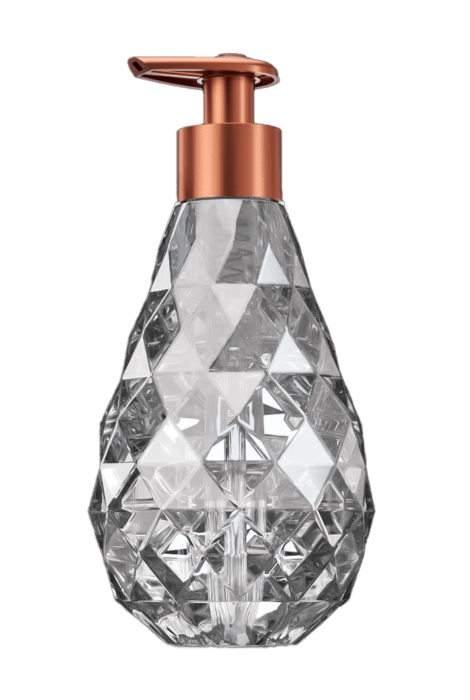
Make an impact in more ways than one with our lust-worthy limited edition hand soap bottle. designed to be used + reused + resplendent on the side of your sink. this flawless gem is filled with our signature sweet water gel hand wash made with plant-based cleansers + biodegradable ingredients. turn heads, not just taps.
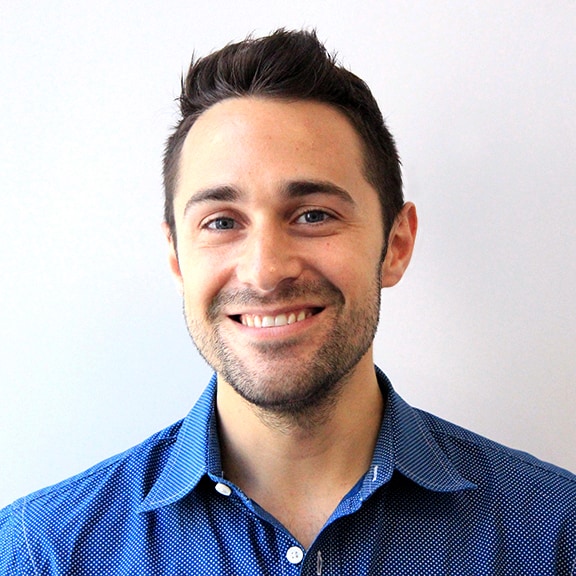
the brains behind the bottle Sean McGreevy, design director
method was born out of the idea that homes should be cleaner + more colourful. our daring designers, fearless thinkers + mad scientists believe that making soap leads to brave ideas, bold inventions + beautiful bubbles. because we believe creativity is a force for good.
what was the inspiration behind the design of the glass for good bottle?
glass for good started as a ‘hunch’ – an internal name for an early concept that needs incubation. i had been thinking about ways to reduce our impact on the planet and liked the idea of a durable, modern interpretation of our iconic teardrop hand wash. method has a culture of experimentation + exploration and this bottle was born from that freedom of creativity. the inspiration came from nature. i had watched a fascinating documentary about geodes + gemstones and learned how gems are cut to maximize light refractions. i began brainstorming ways to design bottles that refracted light, turning a static object into something a bit more dynamic.
what was the design process of the glass for good bottle?
the glass for good design process was different from the way we develop most of our products. it was a passion project that very few colleagues knew about until i shared out the ‘hunch report’ (an annual, design-led innovation report outlining new product + platform opportunities). i had developed a number of different designs that explored texture on our teardrop hand wash, all focused on creating a compelling enough refillable bottle to incentivize behaviour change. i had built numerous clear prototypes that we could fill up with hand wash to simulate the experience. i continued refining the design and commissioned a high-end prototype to bring the product to full resolution prior to the hunch report share-out. the concept was well received, but the prototype stole the show!
what was your career path to get into product design? do you have any advice for people looking to get into the industry?
my grandfather, ‘Opa’ had a heavy influence on my childhood. he was a holocaust survivor that left his family and fled from the Nazis as a 12-year-old boy. he was wildly creative, started multiple businesses, built his house + all of the furniture in it, with only a third grade education. he did everything he could to make sure all of his grandchildren had amazing childhoods, as his was stolen from him. i spent nearly every weekend with him learning about woodworking, power-tools and how to design + develop product ideas. it was because of him that i wanted to become an inventor. when i started thinking about college, i would google things like ‘professional inventor’ or ‘design engineer’. i happened to stumble across industrial design and couldn’t believe such a perfect major existed. i joined the Cleveland Institute of Art in 2001 and pursued an industrial design degree. my advice for people getting into the industry is to act upon your crazy ideas and avoid people that tell you it cannot be done.
what were the design challenges when creating the glass for good bottle?
some of the bigger challenges when creating the glass for good bottle were in figuring out how to commercialise something so far outside of our core competency. anytime you’re developing a product that requires a different material, a new supplier network or is sold through different sales channels, it can be challenging to resolve potential roadblocks. glass for good presented enormous challenges, but luckily i get to work with some of the most brilliant minds who were excited to be part of a team creating a breakthrough.
from your experience, how can design be effective in driving understanding and changing behaviours with regards to sustainability?
consumers are willing to change behaviour if you offer them a better experience, which is why we focus on creating experiences worth adopting. adoption is key when it comes to innovation. stop focusing on trying to change the industry with lacklustre products and experiences. start focusing on deeply understanding your consumer’s wants + needs and create compelling propositions that consumers find irresistible – that’s the secret to behaviour change.
what do you think the future looks like for the next generation of sustainable designers?
the future presents a lot of challenges; from oceans filled with plastic, to water scarcity, climate change etc. designers ignoring sustainability are not futureproofing their planet, nor their careers. in other words, every designer has a responsibility for the products they put into the world and the lifespan associated with those products. the future will be challenging, but it will continue to drive innovation and force humans to continue evolving.


